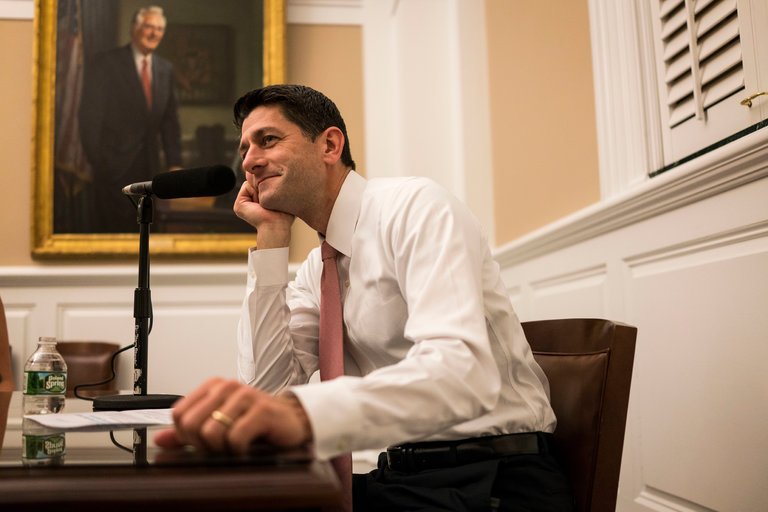Republicans Search for Proof Their Tax Plans Will Pay for Themselves
-

Republicans Search for Proof Their Tax Plans Will Pay for Themselves
by Jim Tankersley of The New York Times
Nov. 12, 2017Republican leaders keep insisting that their plans to cut taxes by $1.5 trillion over the next decade will not add to the national debt — yet economic analyses of the Senate and House proposals keep predicting that the plans will do just that. The disconnect is prompting House and Senate Republican leaders to hunt down — and promote — more optimistic forecasts, even if they exclude large parts of the tax bills from their analyses or assume growth-boosting features that are not, in fact, in the bills.
"When you’re in a political organization, you’re constantly model shopping," said Kent Smetters, a former economic adviser to President George W. Bush, who is now the faculty director of the Penn Wharton Budget Model at the University of Pennsylvania.
Republican leaders have said the tax cuts they are planning will essentially pay for themselves. Lawmakers gave themselves, via their 2018 budget resolution, space for $1.5 trillion in revenue losses from tax cuts, but they have promised those losses will be offset by increased economic growth spurred by the tax overhaul. Finding a model that supports the ambitious economic growth projections is critical to their ability to pass a tax cut along party lines. The House and Senate bills have been introduced and amended at a rapid clip, and economists are only now beginning to plug their details into sophisticated models that predict how much additional growth the cuts might produce. So far, every so-called [desc=Also known as dynamic scoring, dynamic analyses predict the impact of a fiscal policy change by forecasting the effect of an economic agents' reaction to incentives created by policy.]dynamic analysis[/desc] that scrutinizes the full details of the bills and factors in economic growth finds that those plans would add at least $500 billion and as much as $1.7 trillion to the deficit.
Speaker Paul D. Ryan insisted last week that the House bill would not add to the deficit, even after an analysis by the independent Tax Foundation found that the bill would add $1 trillion to deficits over a decade. The Treasury Department has not yet released any economic analysis of the congressional plans. Economists at Goldman Sachs said last month that they expect tax cuts to generate enough additional growth to offset about a fifth of their revenue losses, equating to $1 trillion of net tax cuts losing $800 billion on a dynamic basis.
Dynamic scoring is inexact in the best of circumstances. As a result, only a few models have churned out consistent dynamic analyses that attempt to account for all the provisions of the House and Senate bills. The Tax Foundation has one. Mr. Smetters and his Penn Wharton team have another. Perhaps the most important scorekeeper on that front, the congressional Joint Committee on Taxation, is due to weigh in this week, with an analysis of the bill pending in the House. Ironically, the models that so far have produced the least optimistic forecasts for the Republican plan are the ones that most closely track the assumptions conservatives have long espoused about the economy: that racking up deficits and debt will hold back growth.
That is the case with the Penn Wharton model, which finds that the House bill would lose between $1 trillion and $1.7 trillion over a decade in revenue. The Tax Foundation’s more optimistic model projects the Senate bill would lose $500 billion in revenue after growth effects. The one model so far to suggest that the bills could fully pay for themselves makes some growth-boosting assumptions that differ from the bills as drafted, and it excludes the impacts of personal income tax changes on the economy. That model has been criticized by economists who warn of the seven deadly sins of overly optimistic dynamic scoring models. This particular one commits Sin No. 2: Using estimates from 'similar' tax plans which are not actually similar.
-
Let's ignore this specific tax plan for a minute.
The headline and mantra of the article are common place regardless political party and/or leanings.
In the UK, under labour, taxes went up and when people struggled to pay their bills because wages were stagnant, while taxes and inflation skyrocketed. Gordon Brown (the then tax man) told the nation to put their bills on their credit cards.
